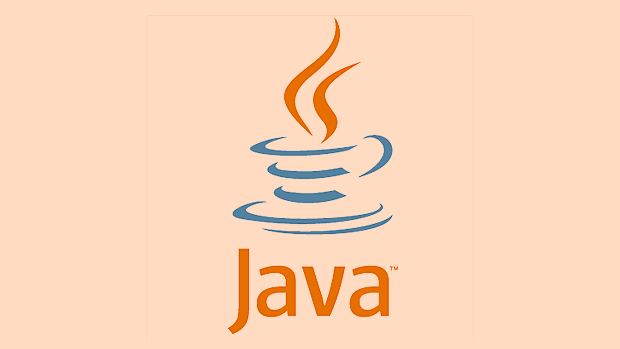Using generics can improve the type safety and reusability of Java code. The answer is that generics must be used to avoid runtime errors and reduce type conversion; 1. Generics can check type safety at compile time, eliminate casts, and improve code clarity; 2. Generics can be defined to encapsulate any type, so as to implement type-safe data operations; 3. Use bounded type parameters such as

Generics in Java are one of the most powerful features introduced in Java 5, enabling developers to write flexible, reusable, and type-safe code. By using generics, you can catch bugs at compile time instead of runtime, reduce casting, and improve code clarity. If you're writing Java code today—especially with collections, custom data structures, or APIs—mastering generics is essential.

Let's break down how to effectively use generics to write safer, cleaner, and more maintainedable code.
1. What Are Generics and Why Use Them?
Generics allows you to define classes, interfaces, and methods with type parameters . Instead of working with Object and casting, you work with specific types known at compile time.

Before generics (bad):
List list = new ArrayList();
list.add("Hello");
String s = (String) list.get(0); // Unsafe: could throw ClassCastExceptionWith generics (good):

List<String> list = new ArrayList<>();
list.add("Hello");
String s = list.get(0); // No cast needed, type-safe? Benefits:
- Compile-time type checking
- Eliminates the need for explicit casting
- Enables writing reusable code across different types
2. Generic Classes and Interfaces
You can create your own generic classes and interfaces by introducing type parameters.
Example: A simple generic box
public class Box<T> {
private T value;
public void set(T value) {
this.value = value;
}
public T get() {
return value;
}
}Now you can use it safely:
Box<String> stringBox = new Box<>();
stringBox.set("Hi");
String content = stringBox.get(); // No cast, type-safeYou can also have multiple type parameters:
public class Pair<T, U> {
private T first;
private U second;
// constructor, getters...
}3. Bounded Type Parameters for Constraints
Sometimes you want to restrict the types that can be used with a generic. Use bounded type parameters with extends .
Example: Only allow types that extend Number
public class Calculator<T extends Number> {
public double add(T a, T b) {
return a.doubleValue() b.doubleValue();
}
}Now this works:
Calculator<Integer> calc = new Calculator<>(); calc.add(5, 10); // OK
But this would fail at compile time:
Calculator<String> calc = new Calculator<>(); // Compile error!
You can also use bounded wildcards ( ? extends T , ? super T ) for more flexibility in method parameters.
4. Wildcards: ? , ? extends , and ? super
Wildcards help when you need to work with unknown types while preserving type safety.
? – Unbounded Wildcard
Use when you only need to read or operate generally.
public void printList(List<?> list) {
for (Object item : list) {
System.out.println(item);
}
} ? extends T – Upper Bounded Wildcard
Allows any subtype of T. Useful for producer scenarios (eg, reading from a list).
public double sum(List<? extends Number> numbers) {
return numbers.stream()
.mapToDouble(Number::doubleValue)
.sum();
} This accepts List<Integer> , List<Double> , etc.
? super T – Lower Bounded Wildcard
Allows any supertype of T. Ideal for consumer scenarios (eg, adding to a list).
public void addNumbers(List<? super Integer> list) {
list.add(1);
list.add(2);
} Accepts List<Integer> , List<Number> , or List<Object> .
? Remember PECS : Producer- extends , Consumer- super .
5. Generic Methods
You can define methods with their own type parameters, independent of the class.
public class Util {
public static <T> void printAll(List<T> items) {
for (T item : items) {
System.out.println(item);
}
}
}Call it without specifying the type explicitly—Java infers it:
List<String> names = Arrays.asList("Alice", "Bob");
Util.printAll(names); // T inferred as String6. Erasure and Limitations
Java generics use type erasure —generic type information is removed at runtime. This means:
- You can't instantiate
new T()or checkif (obj instanceof T) - No overloading based only on different generic types
- Array creation of generic types is not allowed:
new T[10]→ compile error
But the trade-off is backward compatibility and no runtime overhead.
7. Best Practices for Using Generics
To write robust and maintainable generic code:
- ? Always use generics with collections
- ? Prefer bounded wildcards when flexibility is needed
- ? Use meaningful type parameter names (eg,
Tfor type,K/Vfor key/value) - ? Avoid raw types—they defeat the purpose of generics
- ? Don't ignore unchecked warnings—they often point to real issues
Mastering generics takes practice, but once you understand the core concepts—type parameters, wildcards, bounds, and erasure—you'll write code that's not only safer but also more expressive and reusable.
Basically, if you're not using generics in modern Java, you're doing it wrong. Start small, use them consistently, and soon they'll feel natural.
The above is the detailed content of Mastering Generics in Java for Type-Safe Code. For more information, please follow other related articles on the PHP Chinese website!

Hot AI Tools

Undress AI Tool
Undress images for free

Undresser.AI Undress
AI-powered app for creating realistic nude photos

AI Clothes Remover
Online AI tool for removing clothes from photos.

Clothoff.io
AI clothes remover

Video Face Swap
Swap faces in any video effortlessly with our completely free AI face swap tool!

Hot Article

Hot Tools

Notepad++7.3.1
Easy-to-use and free code editor

SublimeText3 Chinese version
Chinese version, very easy to use

Zend Studio 13.0.1
Powerful PHP integrated development environment

Dreamweaver CS6
Visual web development tools

SublimeText3 Mac version
God-level code editing software (SublimeText3)

Hot Topics
 What is the `enum` type in Java?
Jul 02, 2025 am 01:31 AM
What is the `enum` type in Java?
Jul 02, 2025 am 01:31 AM
Enums in Java are special classes that represent fixed number of constant values. 1. Use the enum keyword definition; 2. Each enum value is a public static final instance of the enum type; 3. It can include fields, constructors and methods to add behavior to each constant; 4. It can be used in switch statements, supports direct comparison, and provides built-in methods such as name(), ordinal(), values() and valueOf(); 5. Enumeration can improve the type safety, readability and flexibility of the code, and is suitable for limited collection scenarios such as status codes, colors or week.
 What is the interface segregation principle?
Jul 02, 2025 am 01:24 AM
What is the interface segregation principle?
Jul 02, 2025 am 01:24 AM
Interface Isolation Principle (ISP) requires that clients not rely on unused interfaces. The core is to replace large and complete interfaces with multiple small and refined interfaces. Violations of this principle include: an unimplemented exception was thrown when the class implements an interface, a large number of invalid methods are implemented, and irrelevant functions are forcibly classified into the same interface. Application methods include: dividing interfaces according to common methods, using split interfaces according to clients, and using combinations instead of multi-interface implementations if necessary. For example, split the Machine interfaces containing printing, scanning, and fax methods into Printer, Scanner, and FaxMachine. Rules can be relaxed appropriately when using all methods on small projects or all clients.
 Asynchronous Programming Techniques in Modern Java
Jul 07, 2025 am 02:24 AM
Asynchronous Programming Techniques in Modern Java
Jul 07, 2025 am 02:24 AM
Java supports asynchronous programming including the use of CompletableFuture, responsive streams (such as ProjectReactor), and virtual threads in Java19. 1.CompletableFuture improves code readability and maintenance through chain calls, and supports task orchestration and exception handling; 2. ProjectReactor provides Mono and Flux types to implement responsive programming, with backpressure mechanism and rich operators; 3. Virtual threads reduce concurrency costs, are suitable for I/O-intensive tasks, and are lighter and easier to expand than traditional platform threads. Each method has applicable scenarios, and appropriate tools should be selected according to your needs and mixed models should be avoided to maintain simplicity
 Differences Between Callable and Runnable in Java
Jul 04, 2025 am 02:50 AM
Differences Between Callable and Runnable in Java
Jul 04, 2025 am 02:50 AM
There are three main differences between Callable and Runnable in Java. First, the callable method can return the result, suitable for tasks that need to return values, such as Callable; while the run() method of Runnable has no return value, suitable for tasks that do not need to return, such as logging. Second, Callable allows to throw checked exceptions to facilitate error transmission; while Runnable must handle exceptions internally. Third, Runnable can be directly passed to Thread or ExecutorService, while Callable can only be submitted to ExecutorService and returns the Future object to
 Best Practices for Using Enums in Java
Jul 07, 2025 am 02:35 AM
Best Practices for Using Enums in Java
Jul 07, 2025 am 02:35 AM
In Java, enums are suitable for representing fixed constant sets. Best practices include: 1. Use enum to represent fixed state or options to improve type safety and readability; 2. Add properties and methods to enums to enhance flexibility, such as defining fields, constructors, helper methods, etc.; 3. Use EnumMap and EnumSet to improve performance and type safety because they are more efficient based on arrays; 4. Avoid abuse of enums, such as dynamic values, frequent changes or complex logic scenarios, which should be replaced by other methods. Correct use of enum can improve code quality and reduce errors, but you need to pay attention to its applicable boundaries.
 Understanding Java NIO and Its Advantages
Jul 08, 2025 am 02:55 AM
Understanding Java NIO and Its Advantages
Jul 08, 2025 am 02:55 AM
JavaNIO is a new IOAPI introduced by Java 1.4. 1) is aimed at buffers and channels, 2) contains Buffer, Channel and Selector core components, 3) supports non-blocking mode, and 4) handles concurrent connections more efficiently than traditional IO. Its advantages are reflected in: 1) Non-blocking IO reduces thread overhead, 2) Buffer improves data transmission efficiency, 3) Selector realizes multiplexing, and 4) Memory mapping speeds up file reading and writing. Note when using: 1) The flip/clear operation of the Buffer is easy to be confused, 2) Incomplete data needs to be processed manually without blocking, 3) Selector registration must be canceled in time, 4) NIO is not suitable for all scenarios.
 Exploring Different Synchronization Mechanisms in Java
Jul 04, 2025 am 02:53 AM
Exploring Different Synchronization Mechanisms in Java
Jul 04, 2025 am 02:53 AM
Javaprovidesmultiplesynchronizationtoolsforthreadsafety.1.synchronizedblocksensuremutualexclusionbylockingmethodsorspecificcodesections.2.ReentrantLockoffersadvancedcontrol,includingtryLockandfairnesspolicies.3.Conditionvariablesallowthreadstowaitfor
 How Java ClassLoaders Work Internally
Jul 06, 2025 am 02:53 AM
How Java ClassLoaders Work Internally
Jul 06, 2025 am 02:53 AM
Java's class loading mechanism is implemented through ClassLoader, and its core workflow is divided into three stages: loading, linking and initialization. During the loading phase, ClassLoader dynamically reads the bytecode of the class and creates Class objects; links include verifying the correctness of the class, allocating memory to static variables, and parsing symbol references; initialization performs static code blocks and static variable assignments. Class loading adopts the parent delegation model, and prioritizes the parent class loader to find classes, and try Bootstrap, Extension, and ApplicationClassLoader in turn to ensure that the core class library is safe and avoids duplicate loading. Developers can customize ClassLoader, such as URLClassL






